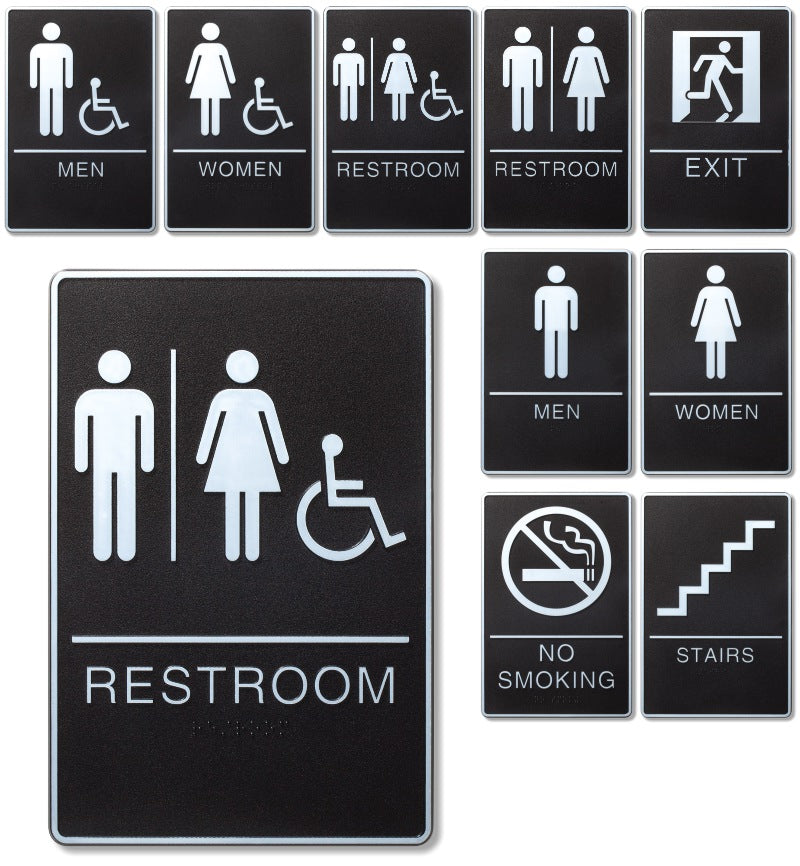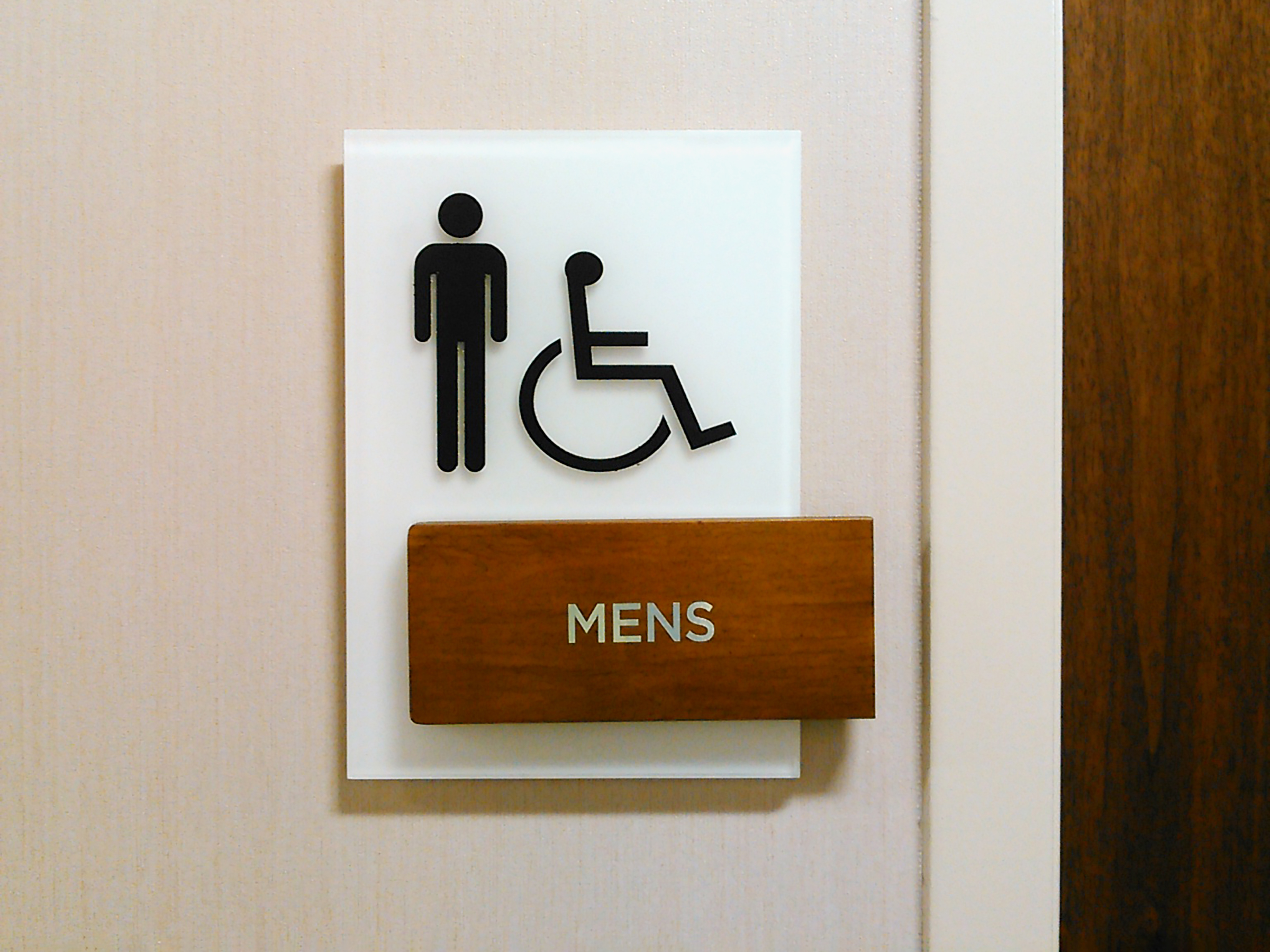Comprehending the Laws Behind ADA Signs
Comprehending the Laws Behind ADA Signs
Blog Article
Exploring the Trick Features of ADA Signs for Boosted Accessibility
In the world of availability, ADA indicators offer as silent yet effective allies, making sure that areas are inclusive and accessible for individuals with specials needs. By integrating Braille and tactile aspects, these indicators break obstacles for the aesthetically damaged, while high-contrast color systems and clear font styles cater to diverse aesthetic requirements.
Importance of ADA Conformity
Making certain compliance with the Americans with Disabilities Act (ADA) is essential for promoting inclusivity and equivalent access in public rooms and workplaces. The ADA, established in 1990, mandates that all public centers, employers, and transportation solutions accommodate individuals with impairments, guaranteeing they delight in the exact same civil liberties and chances as others. Conformity with ADA requirements not just satisfies lawful obligations however likewise enhances an organization's reputation by demonstrating its dedication to diversity and inclusivity.
One of the essential elements of ADA conformity is the execution of available signage. ADA indicators are made to ensure that people with disabilities can conveniently browse through buildings and spaces.
In addition, adhering to ADA guidelines can minimize the threat of legal effects and prospective fines. Organizations that fail to comply with ADA standards may face fines or legal actions, which can be both destructive and monetarily troublesome to their public photo. Thus, ADA conformity is essential to fostering a fair environment for every person.
Braille and Tactile Elements
The incorporation of Braille and responsive components right into ADA signage personifies the concepts of accessibility and inclusivity. These functions are crucial for people that are blind or aesthetically damaged, enabling them to browse public areas with better independence and confidence. Braille, a responsive writing system, is vital in offering composed info in a style that can be easily regarded through touch. It is commonly placed under the equivalent text on signage to make certain that individuals can access the information without visual support.
Tactile aspects prolong past Braille and include raised signs and characters. These components are designed to be discernible by touch, enabling individuals to recognize room numbers, bathrooms, exits, and various other essential areas. The ADA establishes details standards relating to the dimension, spacing, and positioning of these responsive aspects to optimize readability and make certain consistency across different atmospheres.

High-Contrast Color Design
High-contrast color plans play a critical function in improving the exposure and readability of ADA signage for people with aesthetic disabilities. These schemes are necessary as they make best use of the difference in light reflectance between message and history, making certain that indicators are conveniently noticeable, even from a distance. The Americans with Disabilities Act (ADA) mandates making use of specific color contrasts to suit those with limited vision, making it a critical element of conformity.
The efficacy of high-contrast colors hinges on their ability to stick out in different lights conditions, consisting of poorly lit settings and areas with glow. Generally, dark message on a light background or light message on a dark background is employed to attain optimal comparison. Black message on a white or yellow history gives a raw aesthetic distinction that assists in quick acknowledgment and understanding.

Legible Fonts and Text Size
When considering the design of ADA signs, the selection of readable fonts and proper text size can not be overemphasized. The Americans with Disabilities Act (ADA) mandates that typefaces need to be not italic and sans-serif, oblique, manuscript, extremely ornamental, or of unusual kind.
The dimension of the text likewise plays a critical role in accessibility. According to ADA standards, the minimal message elevation should be 5/8 inch, and it should raise proportionally with checking out distance. This is especially essential in public spaces where signage demands to be checked out quickly and properly. Uniformity in text dimension adds to a natural visual experience, aiding people in navigating atmospheres successfully.
In addition, spacing between lines and letters is indispensable to clarity. Adequate spacing stops characters from showing up crowded, boosting readability. By sticking to these standards, developers can substantially boost availability, ensuring that signs offers its designated objective for all people, regardless of their aesthetic capabilities.
Efficient Positioning Strategies
Strategic positioning of ADA signs is important for making the most of access and making certain conformity with legal requirements. Appropriately positioned indicators guide individuals with specials needs effectively, promoting navigating in public spaces. Key considerations consist of height, visibility, and proximity. ADA standards state that indicators need to be mounted at a height between see here now 48 to 60 inches from the ground to ensure they are within the line of sight for both standing and seated individuals. This conventional height variety is important for inclusivity, allowing wheelchair individuals and individuals of differing heights to access info easily.
Furthermore, indications should be placed beside the lock side of doors to enable simple identification before access. This positioning helps people locate rooms and rooms without blockage. In cases where there is no door, indicators must be positioned on the local nearby wall. Uniformity in indication positioning throughout a facility boosts predictability, minimizing confusion and enhancing general user experience.

Conclusion
ADA indications play an essential duty in advertising look at these guys access by incorporating attributes that resolve the demands of people with handicaps. These components jointly promote an inclusive atmosphere, highlighting the significance of ADA compliance in ensuring equivalent accessibility for all.
In the world of availability, ADA indicators serve as silent yet effective allies, making certain that rooms are inclusive and accessible for people with handicaps. The ADA, established in 1990, mandates that all public centers, companies, and transport services accommodate people with specials needs, ensuring they delight in the same civil liberties and possibilities as others. ADA Signs. ADA indications are developed to make certain that people with disabilities can easily browse with spaces and structures. ADA guidelines specify that indications ought to be installed at a height in between 48 to 60 inches from the ground to ensure you can find out more they are within the line of view for both standing and seated individuals.ADA indicators play a crucial function in promoting access by integrating features that attend to the needs of individuals with handicaps
Report this page